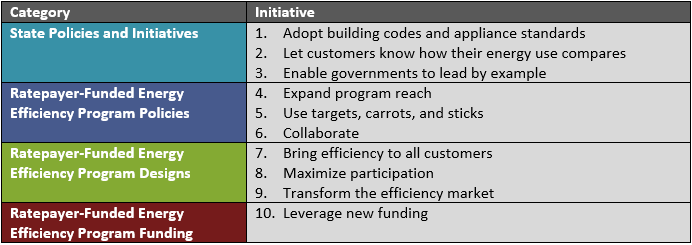Ten Strategies to Increase Customer Participation and Fairness in Energy Efficiency
Don’t miss our webinar on this topic today at 2 p.m. EST. Register here.
Energy efficiency is widely recognized as an abundant and low-cost option for complying with the requirements of EPA’s Clean Power Plan. Whether states choose a mass-based or a rate-based approach to compliance, energy efficiency should be the primary strategy for complying with the Clean Power Plan. However, not all electric customers have equal access to customer-funded efficiency programs. Concerns about fairness between customers—those who participate in programs and see greater benefits than those who do not—create a barrier to widespread implementation of energy efficiency programs.
In a handbook released today, Fair, Abundant, and Low-Cost: A Handbook for Using Energy Efficiency in Clean Power Plan Compliance, Synapse outlines ten strategies (summarized in the table below) to mitigate concerns about fairness between customers. The handbook—a resource for state legislators, public utility commissions, local governments, program administrators, and other stakeholders—discusses each strategy in detail, including how it promotes fairness, its potential to save more energy, the actions states must take to put the strategy in place, and examples of entities that have already implemented these strategies.
Synapse also released an accompanying factsheet that discusses the key concepts driving these strategies and describes how states can leverage the Clean Power Plan to generate additional funds for energy efficiency programs.
